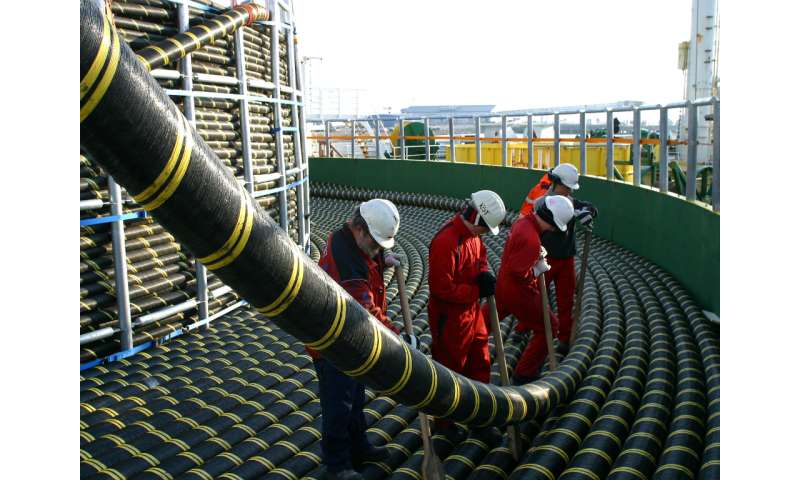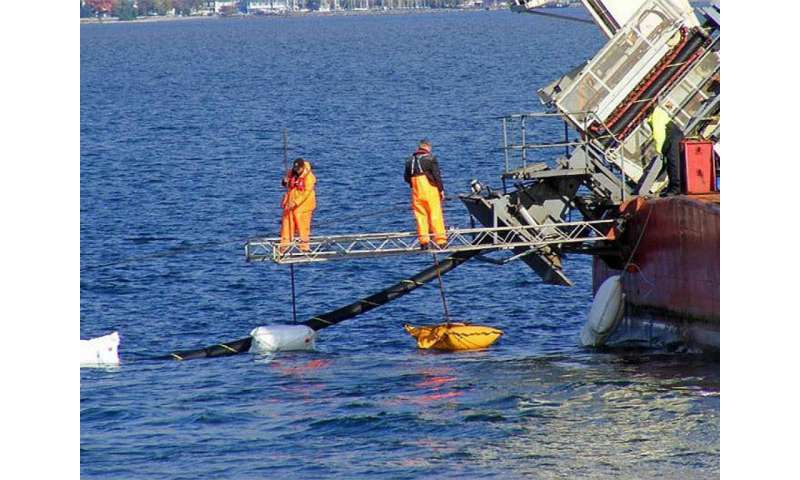Undersea HVDC cables, discovering some of the world’s top power interconnections

The deepest submarine power cable in the world runs in the Tyrrhenian sea, 1,600 meters below sea level. It connects Sardinia with the Italian mainland. The project is called SA.PE.I and links the converter stations of Fiume Santo, near Sassari, and Latina.
This system consists of cables running over land for 15km before they connect with a 420km-long submarine cable. Where the seabed is rocky, the cable is anchored using manually fixed collars. In sediment zones it is protected through silting up to a depth of about one metre.
The plant was inaugurated in March 2011 following a number of years of scientific studies, geophysical seabed surveys and cable-laying. The €730m investment now allows the owner Terna to operate with a peak transmission capacity of a thousand kilowatts through a 12cm-diameter cable.
Terna is also collaborating with the European Best Paths project, which is aimed at improving electricity infrastructure to feed larger capacities of renewable energy into the grid. The Italian case study is the SACOI line, which connects Sardinia to Tuscany via the island of Corsica. The project's international team is looking at ways to revamp the existing connection. Possible solutions include small- and large-scale digital simulations and producing prototypes and full scale components for some sections of the plant. These components include, for example, land and submarine cables with special insulation compounds.

The SACOI line was originally completed in January 1968. There are two submarine cable sections: the first (105 kilometres) connects Italy and Corsica, while the second consists of a 16-kilometres long cable between Sardinia and Corsica. The initial scheme was designed to export power from coal stations on Sardinia to the Italian mainland, but the project was expanded in 1988 with a third converter station at Lucciana on Corsica.
Inaugurated in 2008 with a total investment of €600m, NorNed connects the electricity grids of Norway and The Netherlands. With a length of 580km, it was the longest submarine power cable in the world when it was set up. Its maximum power is 700 megawatts.
The cable connects the Norwegian village of Feda with the seaport of Eemshaven in The Netherlands. The ability to share energy has made supply more secure for both countries. Thanks to a series of technical features, energy loss is very low and efficiency has come close to 96%. Furthermore, the intervention has reduced CO2 emissions.
NordBalt is a submarine high voltage direct current cable that connects the city of Klaipėda in Lithuania with Nybro in Sweden. The laying of the link, one of the longest power cables in the world, started in April 2013 but it took more than two years to complete because, according to Lithuanian Prime minister, the Russian navy interrupted the operation several times. In particular, "Russia has been accused of using its warships to deliberately disrupt the construction of undersea power cables that would reduce the energy reliance of Baltic states on Moscow".

Around 90% of the 450km link runs underwater and carries over 6 terawatt/hour of power a year. It cost €580m to set up. The two cables already laid on the seabed along with the converter stations are designed to connect to a possible future pan-European electricity grid. Part of the line runs over land for 10km in Lithuania and for 40km in Sweden.
The BritNed submarine power cable connects the Isle of Grain in the United Kingdom to the harbour of Maasvlakte near Rotterdam in The Netherlands. The set-up of the interconnector started in April 2011. Costing €600m, the connection consists of two cables bundled together, with a length of 260 kilometres. The BritNed cable will be a crucial hub for a possible continental super grid in the future.
The cable, laid on the North Sea seabed, has a mass of 44 kilograms per meter, reaching a total of 23 thousand tons. More than thirty cable-laying vessels and a fleet of support vessels were used to bundle and bury the copper cables on the seabed, at water depths between 30 and 50 metres.
The 250km-long Baltic Cable entered service in December 1994. At the time it was the second longest high voltage cable in the world, with a nominal maximum transmission power of 600 megawatts. The cable ushered in a new era of power transmission in Europe.

The plant connects the city of Lübeck-Herrenwyk in northern Germany to the Swedish electric power grid at Trelleborg. In addition to the 233-kilometers long section lying on the seabed, the link runs as an underground cable for several kilometres. It also crosses the river Trave in a channel built six metres below the bottom of the river.
The cable has a weight of 55 kilograms per meter and it has a 1600 square millimetres copper conductor made of concentric layers of keystone-shaped strand. Since no cable ship can cope with the total weight of 13,000 tons, the link was laid in two separate sections, and subsequently joined.
The high-voltage transmission facility in Skagerrak connects the wind and thermal power-based Danish grid with the hydroelectric-based Norwegian grid. The plant extends from Tjele, in Denmark, to Kristiansand, in Norway.
The Skagerrak scheme consists of four main sections, each of which is partly built as an overhead line and partly laid as an underwater cable. It was commissioned in 1977, and crossed the Aggersund strait overhead on 70m-high pylons, which were the tallest in Europe. Later underground cabled were introduced to cross the strait. The most recent part of the system, Skagerrak 4, was fully operational by late 2014 and inaugurated in March 2015.

Currently the interconnection consists of about a 100 km land cable and 137 km of subsea cable. The system is designed to better exploit the renewable energy produced in the two countries and allows more efficient use of electricity.
Watch the gallery here: http://www.youris.com/Energy/Gallery/Undersea-HVDC-Cables-Discovering-Some-Of-The-WorldS-Top-Power-Interconnections.kl
Provided by Youris.com